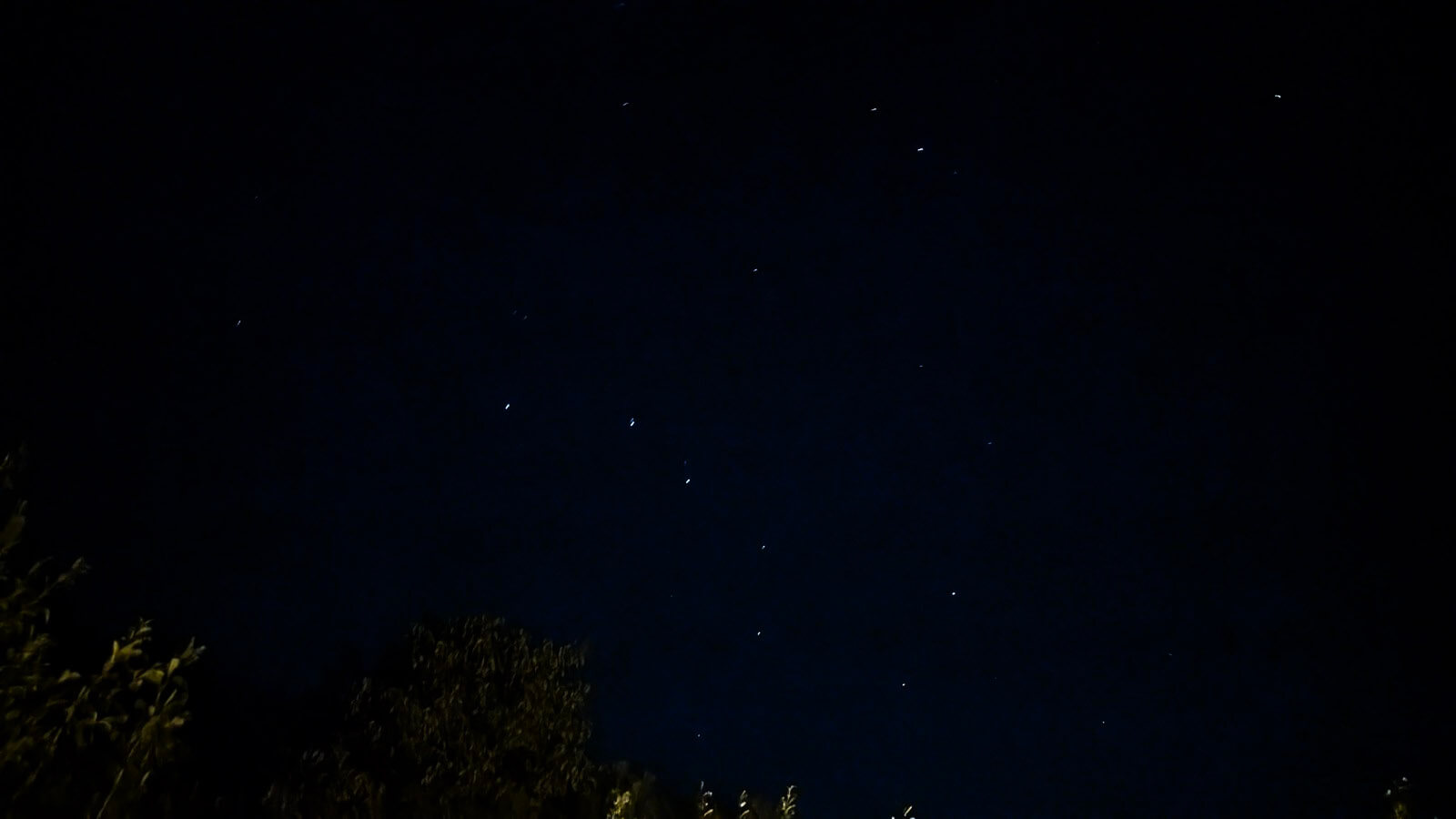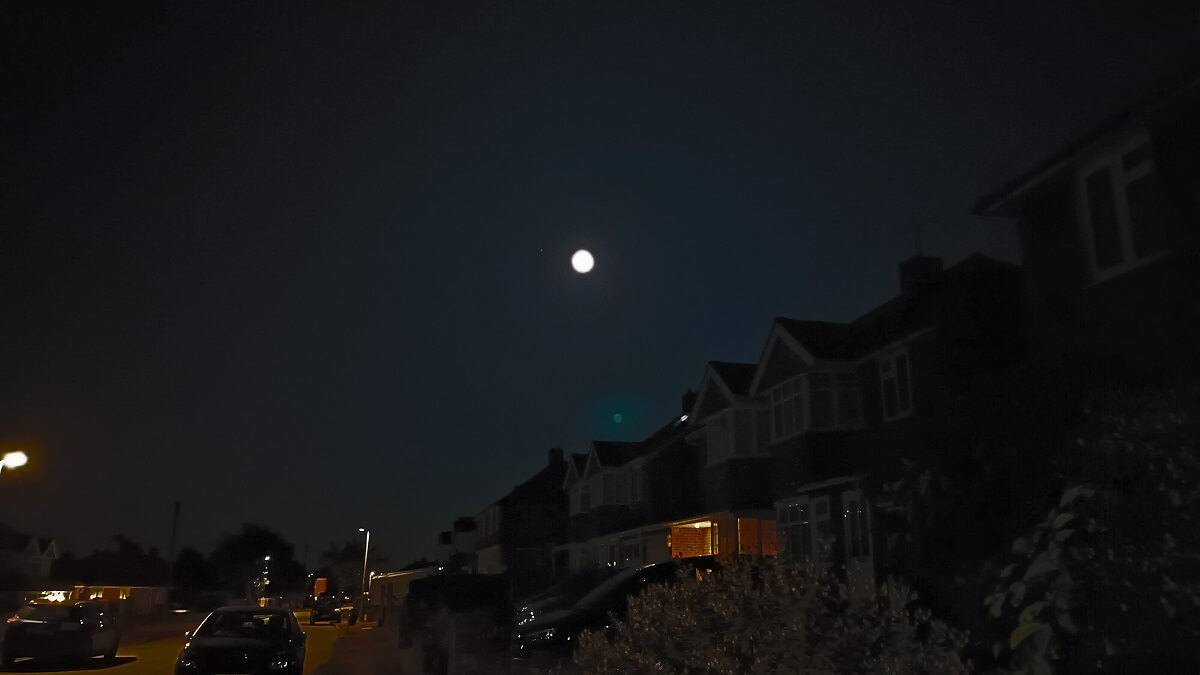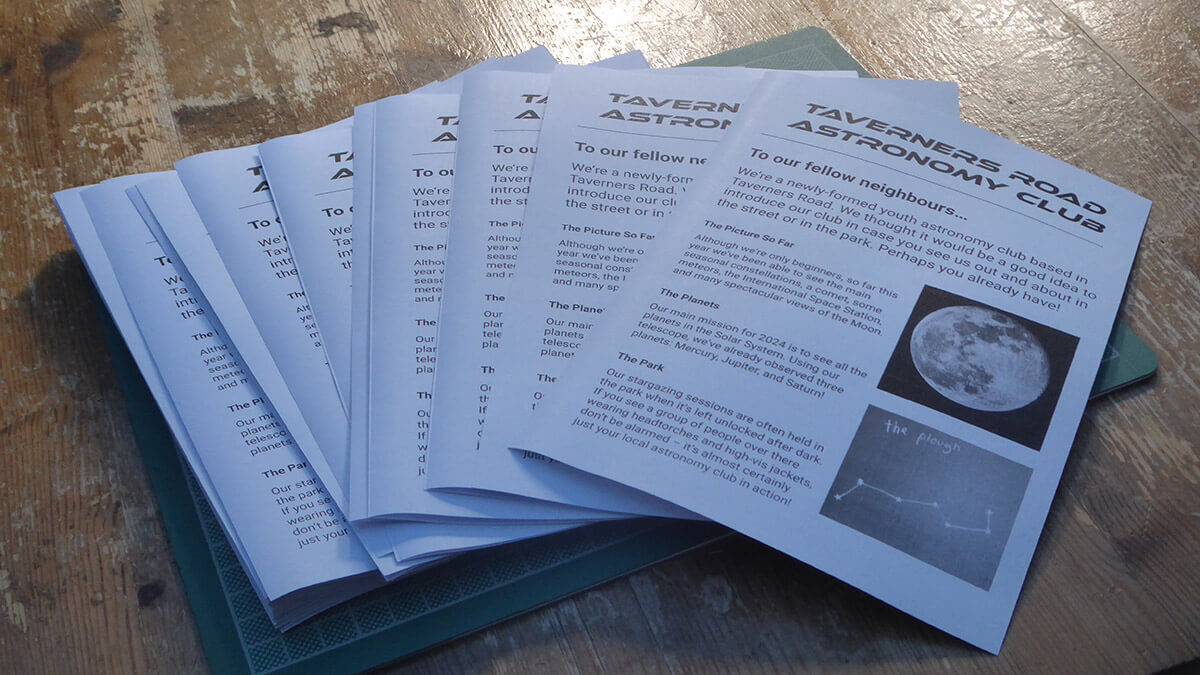TRAC Monthly Report: August 2024
- Category: Monthly Reports
- Author: JM
- Published: 02 Sep 2024
- Last updated: 02 Sep 2024
Solar Observations
We used the paper solar eclipse glasses, the wrap-around plastic eclipse shades, and the telescope solar filter to safely look directly at the Sun on the afternoon of 21 Aug 2024.
Several medium-sized sunspots were visible towards the south-west edge of the Sun's disc. Sunspots are dark regions on the Sun's photosphere where the temperature is lower than the surrounding area. Sunspots are caused by powerful magnetic fields inside the Sun.
We viewed the latest images of the Sun on NASA's Solar Dynamics Observatory (SDO) website. We compared what we could see from the ground with the naked eye to the imagery captured by the scientific instruments onboard NASA's SDO satellites, which are in geosynchronous orbit around the Earth.
The next step is to view the Sun in greater detail by using the telescope with the solar filter attached. I'm still working on getting this organised.
Astrophotography
Matey took this stunning photo of The Plough (bottom center) and Polaris (top right) from Bulgaria. To view the full-size image, click or tap on the photo.

Image credit: MK/TRAC
The second star on the handle of the Plough, Mizar (mag. +2.3), is a well-known double star system. It's companion, Alcor (mag. 4.0), can be seen just above Mizar. Together, they lie approximately 83 light-years from the Sun.
Between the Mizar and the third star in the Plough's handle, Alioth (mag. +1.75), you can spot a fainter star, 78 Ursae Majoris (mag. +5.0). This is another binary star system in the constellation Ursa Major.
Following the two pointer stars at the end of the Plough, Merak (+2.4) and Dubhe (+1.79), leads you to Polaris (mag. +2.0), also known as the North Star or Pole Star.
Summer Constellations
We didn't have much luck with our constellation spotting in August as a result of patchy cloud cover. We didn't get much further than seeing Lyra and Cygnus on 28 Aug 2024, along with the iconic summer triangle asterism.
The only new constellation we saw was Hercules, which was just about visible from the park in the south-west. I'm sure we'll be able to get a clearer view on a future stargazing evening.
Saturn–Moon Conjunction
The highlight of August was the spectacular sight of Saturn (mag. +0.7) in conjunction with the full Moon (mag. -12.8) on 20 Aug 2024. Saturn appeared just to the east of the Moon, positioned at a similar altitude, as shown in the photo below.
Saturn is the very faint dot to the left of the Moon in the photo below.

Image credit: JM/TRAC
Saturn and Titan
The Ringed Planet
Saturn's rings appeared very clearly through the telescope on 20 Aug 2024. The ring system is now almost edge-on from our perspective on Earth.
Thanks to the excellent atmospheric conditions, we were able to use the 9mm eyepiece to observe Saturn at a magnification of 167x, allowing us to see more detail than we'd previously seen in 2024.
TRAC Spots Titan
For the first time in TRAC history, we successfully located Titan (mag. +8.4), Saturn's largest moon. Titan is of particular interest to scientists; apart from Earth, it's currently the only place where large amounts of liquids are known to exist.
For once, we enjoyed an evening with 0% cloud cover. That must be an astronomy club first! And hopefully it won't be the last!
Meteor Shower (Perseids)
Two Astronomy Club members were in Bulgaria during the peak of the Perseids meteor shower this August. Krum saw a couple of meteors in the evening sky, and Matey reported back that he saw a whopping 27!
That's a great result! I'm very impressed, and I must say I'm also a little jealous. From here in Rainham, the outcome was not quite so spectacular; I was out for at least 20 minutes on most clear nights, yet I only managed to see a grand total of four meteors. Next year, I'm coming with you to Bulgaria!
Leaflet to Neighbours
On 29 Aug 2024, we finally got round to creating the leaflet to our fellow neighbours whose gardens back onto the park. Thank you to everyone who helped deliver the leaflets today (02 Sep 2024).
The next step is for me to write to Medway Council.

Image credit: JM/TRAC
Summary
It was fantastic to see a planet at last! I think by now everyone has seen at least one meteor this year. We'll continue with the summer constellations in September 2024 before they disappear as we move into autumn.
James M
TRAC Team Leader
02 Sep 2024 – Rainham, Kent

TRAC is an amateur astronomy group based in Rainham (Kent) in the United Kingdom.
On clear nights, you'll find us outside, observing stars, planets, moons, galaxies, satellites, meteors, and comets.
This monthly report is intended to keep club members informed of our observational activities, track progress towards the club's long-term goals, celebrate successes, and record memorable moments.
Unless stated otherwise, all magnitude values refer to apparent magnitude and have usually been rounded to one decimal place.
We welcome any questions, feedback, or suggestions you may have. Please let us know if anything is unclear or if you notice an error, inaccuracy, or typo. Contact us via email.
© 2024 Taverners Road Astronomy Club